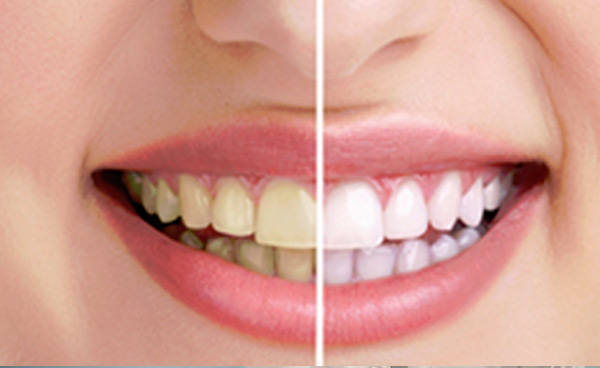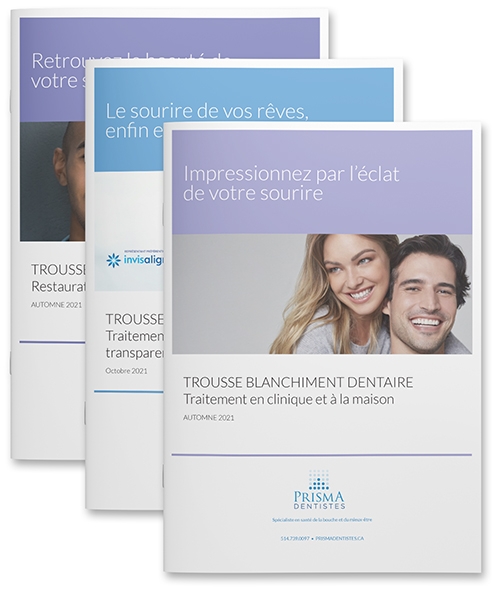INVISALIGN
Finally, the smile of your dreams—at any age!
Are you looking to straighten your teeth without having a metallic smile for several months? Dr Lechnner’s general dentists can realign your teeth comfortably thanks to INVISALIGN® transparent, removable and comfortable orthodontic aligners.
Frequently asked questions about Invisalign®
The Invisalign system is an almost invisible method to straighten teeth using cutting-edge 3D computer imaging technology. Invisalign helps design your complete treatment plan from the initial position of your teeth to the desired final position. A series of transparent aligners are then custom-made to fit your teeth and designed to move them little by little.
Invisalign aligners move teeth through the controlled application of tension to your teeth. Invisalign not only helps control the tension, but also when that tension is applied. The movement is determined by your dentist when establishing your personalized Invisalign treatment plan. Invisalign has been recommended to you by your Prisma dentist following a diagnosis of malocclusion (see below Section for the various types of malocclusion and their effect on the health of your mouth and your teeth).
Align Technology, the company that makes Invisalign, was founded in 1997. Since then more than 4 million patients worldwide have received Invisalign treatment; it is a number that continues to grow each year.
Invisalign aligners are almost invisible so that they integrate discreetly into your lifestyle. They are removable, so you can eat and drink whatever you want by simply removing the aligners. You can also remove them to brush and floss your teeth as you normally would. In most cases, there is no ring or wire to cause irritation in your mouth.
Through digital imaging, you can see your treatment plan and virtual results before you begin treatment to visualize how your straight teeth will appear after treatment is finished.
Invisalign can be recommended at any age, as long as your Prisma dentist has completed an exam and feels you are a suitable candidate.
The treatment duration depends on the severity of your case and can only be determined by your Prisma dentist. However, the average duration of initial treatment is approximately 12 to 18 months. Thereafter, wearing a retainer is recommended and can continue every other night, for life.
There are many variations in the different insurance plans, so you need to analyze your personal plan to make this determination. In general, if a patient’s insurance plan covers orthodontic care, Invisalign should be covered like regular orthodontic appliances (i.e. braces).
Invisalign aligners are classified as a Class 2 Medical Device by the United States Food and Drug Administration (FDA), which authorizes their sale.
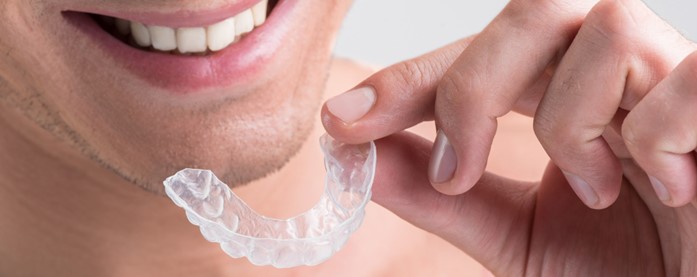
Invisalign treatment overview
Your Invisalign treatment combines your dentist’s diagnosis and prescription with sophisticated computer graphics technology, all to develop a treatment plan that controls the desired movements for your teeth during and after treatment. Following your approval of the treatment plan developed by your dentist, a series of personalized Invisalign aligners is manufactured specifically for your situation. The normal procedure for any Invisalign treatment includes the following steps.
Procedure before and after treatment
- Your Prisma dentist will perform a routine orthodontic pretreatment-type examination including photographs and four X-rays (panoramic and cephalometric) before and after treatment.
- There will be two simulations generated to visualize the final result:
- An initial simulation without photos and pretreatment to explain the Invisalign technology and the results you can expect; and
- A digital simulation (2nd visit, after treatment agreement) with a 3D intraoral camera and digital photos for a detailed evaluation of your mouth’s structure. This second simulation also analyzes the relationship between your teeth, your gums, your lips as well as the natural gestures of your smile in order to ensure a result that meets your expectations.
- Your dentist will take impressions or intraoral scans of your teeth and send them with a prescription to the Align lab. Align technicians will follow your dentist’s prescription to create a ClinCheck® software model of the prescribed treatment.
- After the ClinCheck treatment plan is approved both by you and your dentist, Invisalign will produce and ship a set of custom aligners to the dental clinic. The total number of aligners will vary depending on the complexity of your malocclusion and your dentist’s treatment plan.
- The aligners will be individually numbered and will be issued to you by your dentist with specific instructions for use.
- Unless instructed otherwise by your Prisma dentist, you should wear your aligners for approximately 20 to 22 hours a day, removing them only for eating, brushing and flossing.
- You will progress to the next aligner in the series every two weeks, or as directed by your dentist. The treatment duration varies depending on the complexity of your dentist’s prescription.
- Unless otherwise specified, you should follow up with your dentist at least every 6 to 12 weeks.
Follow-ups after realignment
To ensure that your teeth remain aligned for life, you will wear a retainer after your Invisalign treatment according to the following guidelines:
| APPLIANCE | HOURS | DURATION |
| Invisalign treatment (straightening) | 22/24 hours | To be determined |
| Retainer appliance | 12 to 15 h per day | 0 to 18 months after treatment |
| Retainer appliance | Every other night | For life |
Other considerations
It should be noted that some patients may require bonded aesthetic attachments and/or the use of rubber bands during treatment to facilitate specific orthodontic movements. Others may need additional impressions or intraoral scans and/or refinement aligners after the initial set of aligners.
Advantages and disadvantages
Every dental and medical treatment has its share of advantages and disadvantages from one person to another and can also depend on the patient’s general state of health, if they take any medications, etc. Wearing aligners with existing restorations in the mouth requires a case-by-case assessment, especially in the presence of dental implants, large fillings, crowns, etc. Some teeth may also require interproximal reshaping or thinning in order to create the space necessary for tooth alignment. Your Prisma dentist will therefore make a preliminary diagnosis of the health of your bones and gums, which may be affected by wearing Invisalign, and will make their recommendations accordingly.
Here are some of the advantages and disadvantages to consider before beginning an Invisalign treatment.
Some advantages
Invisalign is a sought-after solution for those who don’t want to wear highly visible braces, whether for personal, professional or cosmetic reasons. Invisalign can straighten the teeth of patients of all ages and is therefore accessible to a wide audience.
In addition to being largely invisible, Invisalign aligners do have any metal wires or brackets like those associated with conventional treatments. They are removable, and allow for normal brushing and flossing, two tasks generally hampered when wearing conventional braces. Some patients, by improving their oral hygiene habits, may even notice an improvement in their periodontal (gum) health along with treatment.
Some disadvantages
Maintaining a poor lifestyle while wearing Invisalign aligners as at all times can exacerbate the risk of cavities, periodontal disease, gum inflammation or decalcification. It’s important for the patient to avoid consuming too much food or drink containing sugar, to brush and floss regularly, and to maintain good oral hygiene, including cleanings and preventative maintenance.
For some patients, wearing aligners may cause tooth sensitivity when switching to the next aligner in the series, or may temporarily irritate the gums, cheeks and lips. As teeth may change position after treatment, wearing retainers regularly at the end of treatment helps to reduce this tendency. Aligners can temporarily affect speech and cause lisping, a speech disorder that should disappear within one to two weeks. Aligners can cause a temporary increase in salivation or dry mouth, and some medications can exacerbate this effect.
The occlusion may change during treatment and cause temporary discomfort for the patient, requiring an occlusal adjustment at the end of treatment. In rare cases, problems can also occur in the jaw joint, causing joint pain, headaches, or ear problems.
Lastly, not wearing the appliance for the required number of hours per day, not using the product as directed, or skipping appointments with your dentist can prolong the treatment duration and interfere with obtaining the desired results.
Before and after photos
What does a typical result look like after an Invisalign orthodontic treatment? Here are some before and after photos of real patients from the Prisma clinic.
Beyond tooth realignment, some patients may need additional treatments or restoration, before or after, to repair worn teeth, resulting from an overlap, for example. For other dental treatments often recommended alongside Invisalign treatment, please see “Our 3-step approach: Other recommended dental treatments“.
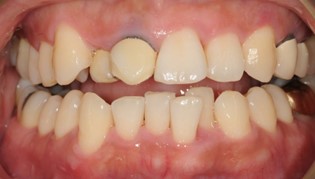


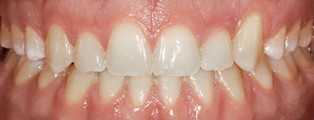
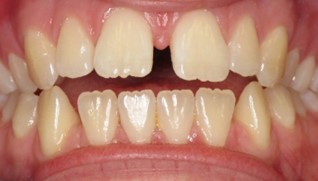
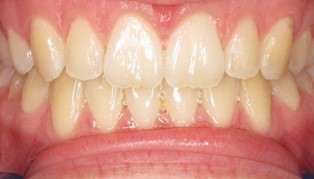
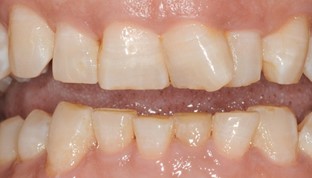
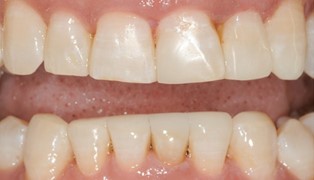
Common dental problems and consequences
General consequences of a malocclusion
Several problems can arise in the presence of a malocclusion, that is, an abnormal relationship between the teeth (spacing, overbite, abnormal position) or the way in which the upper and lower jaws fit together when you close your mouth. The difficulty in brushing all tooth surfaces and flossing is a common contributor to many of these issues, as it results in a proliferation of bacteria and the appearance of plaque. Plaque can cause:
- Cavities
- Periodontal disease
- Poor root support and possible bone loss
- Teeth mobility
- Abscesses
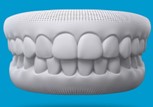
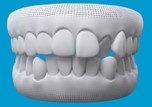
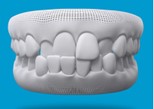
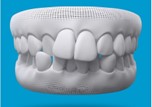
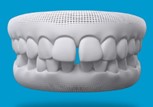

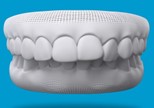

In itself, malocclusion can also lead to structural and medical problems over time, regardless of the type of problem. Malocclusion can cause:
- Occlusal trauma – abfractions
- Non-uniform wear, chipping
- Gum, periodontal problems, loosening, bone loss
- Overlapping teeth, which becomes more pronounced over time if left untreated
Beyond and including the overall impacts common to all malocclusion, we will look at the specific problems associated with each type of malocclusion, which can be resolved or relieved by Invisalign orthodontic realignment
Potential symptoms
- Discolouration of the teeth in the locations where they overlap.
- Gum inflammation and bleeding
- Hypersensitivity of teeth due to wear
- Loosening
- Wobbly teeth
Potential symptoms
- Painful, sensitive tissue
- Gum inflammation and bleeding
Potential symptoms
- Loosening
- Abnormal wear of teeth
Potential symptoms
- Chipped/fractured anterior teeth
- The patient complains of their unsightly smile
Potential symptoms
- Increased sensitivity
- Abfraction
- Posterior teeth wobbling
- Biting your own lips and cheeks when eating or talking
Potential symptoms
- Abnormal wear: the anterior teeth are short or worn
- Teeth hypersensitivity
Potential symptoms
- Abnormal wear of the posterior teeth
- Small notch in the teeth along the gum line
- Loosening
- Wobbly teeth
Appliance maintenance
Without a doubt, one of the most popular benefits for Invisalign patients is the fact that the aligners are removable and can be taken out while eating or brushing the teeth. To ensure that the treatment works properly and is effective, basic maintenance and certain lifestyle habits must be adopted to keep Invisalign aligners in good condition.
Daily:
- Brush your aligners thoroughly every morning with a regular soft toothbrush using antibacterial liquid soap and cold or lukewarm water, then rinse them. You can also use an orthodontic appliance cleaner (eg Novadent Ultra Mild IP). Do not use denture cleaners as they may be too harsh, or alcohol-based Purell. Caution: Do not clean the aligners with hot or boiling water, which can cause the resin material to warp.
- Daily immersion of the aligner into water is neither necessary nor recommended. Water can stain the resin surface leaving mineral deposits. Alcoholic mouthwashes and bleach can penetrate the resin material and your appliance may absorb odours from cleaning solutions.
- If desired, you can use an ultrasonic cleaner every week. You will still need to follow the basic guidelines above.
- You must wear your device for 22 hours a day.
- Chewies will be given to you to ensure that the Invisalign aligners fit properly onto your teeth.
- Chew these Chewies for 10 minutes 3 times a day (or eat with the aligners in your mouth).
- If the aligners irritate your gums or tongue, use an Emery file and lightly file the aligner at the point of friction.
- Avoid eating certain foods such as mustard, coloured spices and oils, red wine and berries (raspberries, blueberries, etc.), as these can stain Invisalign aligners.
Transportation and storage
- Always keep Invisalign aligners in a cool, dry place, out of reach of children and pets.
- These devices are made of a resin that should not be stored at temperatures exceeding 38°C or 100°F, such as in the car, under direct sunlight, etc.
Other recommended dental treatments
Once your teeth have been straightened, do you want to maximize the appearance of your new smile? Invisalign treatment is part of our “3-step approach” for a particularly radiant result.
Invisalign invisible orthodontics without pain
Would you like to discreetly correct a bite defect, overlap or gaps in your teeth? Designed by your dentists with computer-assisted 3D technology, INVISALIGN® custom-made, transparent shells straighten and align teeth.
Teeth whitening
Teeth whitening is an effective complementary solution to maximize your new smile’s radiance, to correct discolouration or yellowing. This can be done at the Prisma clinic and/or at home directly inside Invisalign aligners.
A progression of several shades is possible through the use of professional gels that contain active lightening ingredients combined with oxygen molecules. As a result, these gels penetrate through the enamel to separate the molecules responsible for the colour change and brighten the teeth. Teeth whitening performed in a clinic or at home is a durable and minimally intrusive solution.
Enamel restoration
Restoring worn enamel helps correct the tooth enamel’s discolouration, wear and aging. This process involves applying and polishing a thin layer of composite material to restore your teeth’s surface to its original appearance. This is usually done without anesthesia and without milling, so you can admire your new smile quickly.
Other available treatments
To restore teeth that are stained, discoloured, deformed or slightly deteriorated by wear, porcelain veneers can be affixed after realigning your teeth. These are thin shells that cover the front of the teeth and are used to correct the contour, colour and size to further enhance your smile’s appearance.
For more information and personalized advice about other restorative and aesthetic treatments that can give you a great smile, feel free to contact your Prisma dentist.



